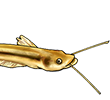/siluriformes/loricariidae/pseudacanthicus/spinosus/1.jpg)
/siluriformes/loricariidae/pseudacanthicus/spinosus/2.jpg) Juvenile
Juvenile/siluriformes/loricariidae/pseudacanthicus/spinosus/3.jpg) Male
Male/siluriformes/loricariidae/pseudacanthicus/spinosus/4.jpg)
/siluriformes/loricariidae/pseudacanthicus/spinosus/5.jpg)
/siluriformes/loricariidae/pseudacanthicus/spinosus/6.jpg)
/siluriformes/loricariidae/pseudacanthicus/spinosus/7.jpg)
/siluriformes/loricariidae/pseudacanthicus/spinosus/8.jpg) Head-on view
Head-on view/siluriformes/loricariidae/pseudacanthicus/spinosus/9.jpg) Juvenile
Juvenile/siluriformes/loricariidae/pseudacanthicus/spinosus/10.jpg)
/siluriformes/loricariidae/pseudacanthicus/spinosus/11.jpg) Close-up of teeth
Close-up of teeth/siluriformes/loricariidae/pseudacanthicus/spinosus/12.jpg)
/siluriformes/loricariidae/pseudacanthicus/spinosus/13.jpg) Close-up of dorsal fin
Close-up of dorsal fin/siluriformes/loricariidae/pseudacanthicus/spinosus/14.jpg)
/siluriformes/loricariidae/pseudacanthicus/spinosus/15.jpg) Caudal fin
Caudal fin/siluriformes/loricariidae/pseudacanthicus/spinosus/16.jpg) Gravid female
Gravid female/siluriformes/loricariidae/pseudacanthicus/spinosus/17.jpg)
/siluriformes/loricariidae/pseudacanthicus/spinosus/18.jpg)
/siluriformes/loricariidae/pseudacanthicus/spinosus/19.jpg) Male trapping female in cave
Male trapping female in cave/siluriformes/loricariidae/pseudacanthicus/spinosus/20.jpg) Egg clutch
Egg clutch/siluriformes/loricariidae/pseudacanthicus/spinosus/21.jpg) Five day old fry
Five day old fry/siluriformes/loricariidae/pseudacanthicus/spinosus/22.jpg) Fry with yolk sac problem
Fry with yolk sac problem/siluriformes/loricariidae/pseudacanthicus/spinosus/23.jpg) Ten day old fry
Ten day old fry/siluriformes/loricariidae/pseudacanthicus/spinosus/24.jpg) Thirty day old fry
Thirty day old fry/siluriformes/loricariidae/pseudacanthicus/spinosus/25.jpg) Seventy five days
Seventy five days/siluriformes/loricariidae/pseudacanthicus/spinosus/26.jpg) Three month old juveniles
Three month old juveniles/siluriformes/loricariidae/pseudacanthicus/spinosus/27.jpg) Close-up of eye
Close-up of eye/siluriformes/loricariidae/pseudacanthicus/spinosus/28.jpg)
/siluriformes/loricariidae/pseudacanthicus/spinosus/29.jpg) Pair, female left
Pair, female left/siluriformes/loricariidae/pseudacanthicus/spinosus/30.jpg) Eggs in cave
Eggs in cave/siluriformes/loricariidae/pseudacanthicus/spinosus/31.jpg) Sixteen day old fry
Sixteen day old fry/siluriformes/loricariidae/pseudacanthicus/spinosus/32.jpg) Ten month old juveniles
Ten month old juveniles/siluriformes/loricariidae/pseudacanthicus/spinosus/33.jpg)
/siluriformes/loricariidae/pseudacanthicus/spinosus/34.jpg)
| Scientific Name | Pseudacanthicus spinosus (Castelnau, 1855) |
| Common Names | L096, Spiny Monster Pleco L160, Coffee And Cream Cactus Pleco, Cremefarvet Kaktussugemalle (Denmark), Gelschwanz Spiny Monster (Germany), Spotted Cactus Pleco |
| Type Locality | Amazon River, Brazil. |
| Synonym(s) | Hypostomus spinosus, Hypostomus spinosus castelnau |
| Pronunciation | SUE dah KAN thi cuss - spin oh suss |
| Etymology | Pseud- Greek: False, Acanthicus - Greek: Spiny, Thorny. Literally "False Acanthicus" referring to this genus being similar to, yet different from, Acanthicus. This specific epithet refers to its spiny (spinosus=spiny, thorny) appearance. |
| Articles | |
| Size | 260mm or 10.2" SL. Find near, nearer or same sized spp. |
| Identification | The German common name for this genus is ''Cactus Pleco''. A good name! Pseudacanthicus is a member of the Acanthicus clade. Species of the Acanthicus clade are distinguished from other Loricariidae species by the presence of (1) longitudinal rows of keels (pointed odontodes) along the body sides; (2) eight or more dorsal-fin rays (vs. six or seven in most other loricariids except Pterygoplichthys, Chaetostoma, Pogonopoma and Pseudancistrus pectegenitor); (3) seven to eight infraorbitals (vs. usually five or six); (4) five anal-fin branched rays (vs. usually four); and (5) presence of hypertrophied odontodes along the snout margin (vs. hypertrophied odontodes absent in other loricariids except Isbrueckerichthys and Pareiorhaphis, in Neoplecostominae; Panaque and Pseudancistrus and Neblinichthys, in Ancistrini; and most dimorphic males of Loricariinae). Within the Acanthicus group, Pseudacanthicus is distinguished by the presence of two small plates in the posterior area of the compound pterotic (vs. one median plate or plate absent), and by the presence of narrow premaxillae with a small number of elongate and curved teeth (except from Leporacanthicus). The distinctive light grey colouration can vary to a darker brown especially with age. This fish appears to have a wide distribution and thus colouration and patterning can be expected to vary somewhat. |
| Sexing | Unknown |
| Distribution | South America: Amazon Basin. Reports also exist from the Orinoco Basin, Venezuela. L096: Pará, Rio do Pará, (Portel) L160: Pará, Rio Tocantins (Cametá-Marabá), Rio Guamá (Ourém) Amazon (click on these areas to find other species found there) Amazon, Lower Amazon, Tocantins, Lower Tocantins, Pará (click on these areas to find other species found there) Amazon, Lower Amazon, Tocantins (click on these areas to find other species found there) Login to view the map. |
| pH | 5.8 - 7.8 |
| Temperature | 25.0-28.0°C or 77-82.4°F (Show species within this range) |
| Other Parameters | Can take cooler water for periods of time. Water current doesn't need to be too strong. |
| Feeding | Carnivore although not a predator, prawns and chopped mussel appear favourites and promote favourable growth. Some vegetable should also be provided and thus balances diet. User data. |
| Furniture | A large stone or preferably wooden hiding place is required, plants are not. |
| Compatibility | Generally peaceful but territorial from a young age. Some large specimens are aggressively territorial and may cause problems if housed with other large nocturnal fish. |
| Suggested Tankmates | The temptation with large tough Loricariids is to keep them with other large tough fish such as Oscars or other brutish characters. This actually works quite well with most omnivorous or mainly vegetarian plecos. Pseudacanthicus despite their defensive protection can be bullied by faster moving fish of similar size. They are carnivores and only eat vegetables when their preferred food is unavailable. The amount of waste produced depends on their diet but is considerably less than a Panaque or Pterygoplichthys of similar size. |
| Breeding | See Shane's World and CotM articles. |
| Breeding Reports | There are 4 breeding reports, read them all here. |
| Reference | Animaux nouveaux or rares v. 2, pp 45, Pl. 22 (fig. 3). |
| Registered Keepers | There are 65 registered keepers, view all "my cats" data. |
| Wishlists | Love this species? Click the heart to add it to your wish list. There are 3 wishes to keep this species, see who wants what. |
| Spotters | Spotted this species somewhere? Click the binoculars! There are 30 records of this fish being seen, view them all. |
| Forum BBCode | |
| Search for P. spinosus | |
| Look up P. spinosus on AquaticRepublic.com | |
 | Look up P. spinosus on Fishbase |
 | Look up P. spinosus on Encyclopedia of Life |
 | Look up P. spinosus on Global Biodiversity Information Facility |
| LFS label creator ARN ref:1.4.40.85 | |
| Last Update | 2025 Jan 02 01:37 (species record created: 2001 May 05 00:00) |




